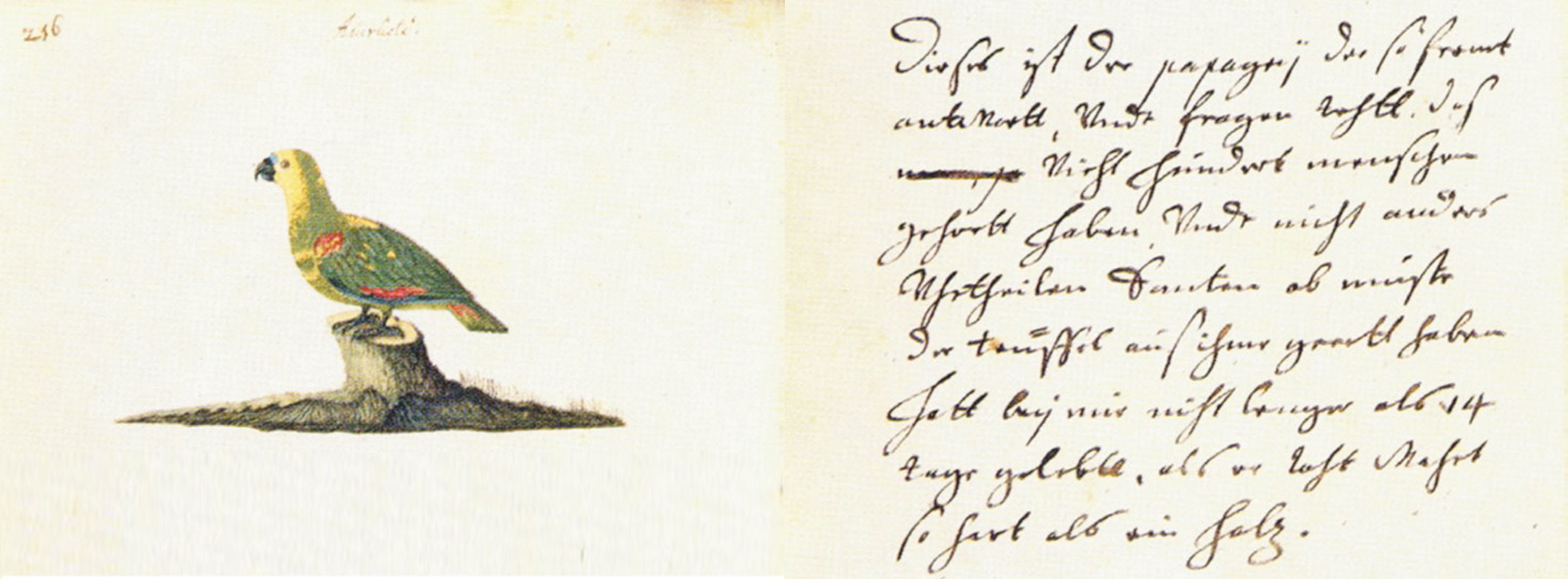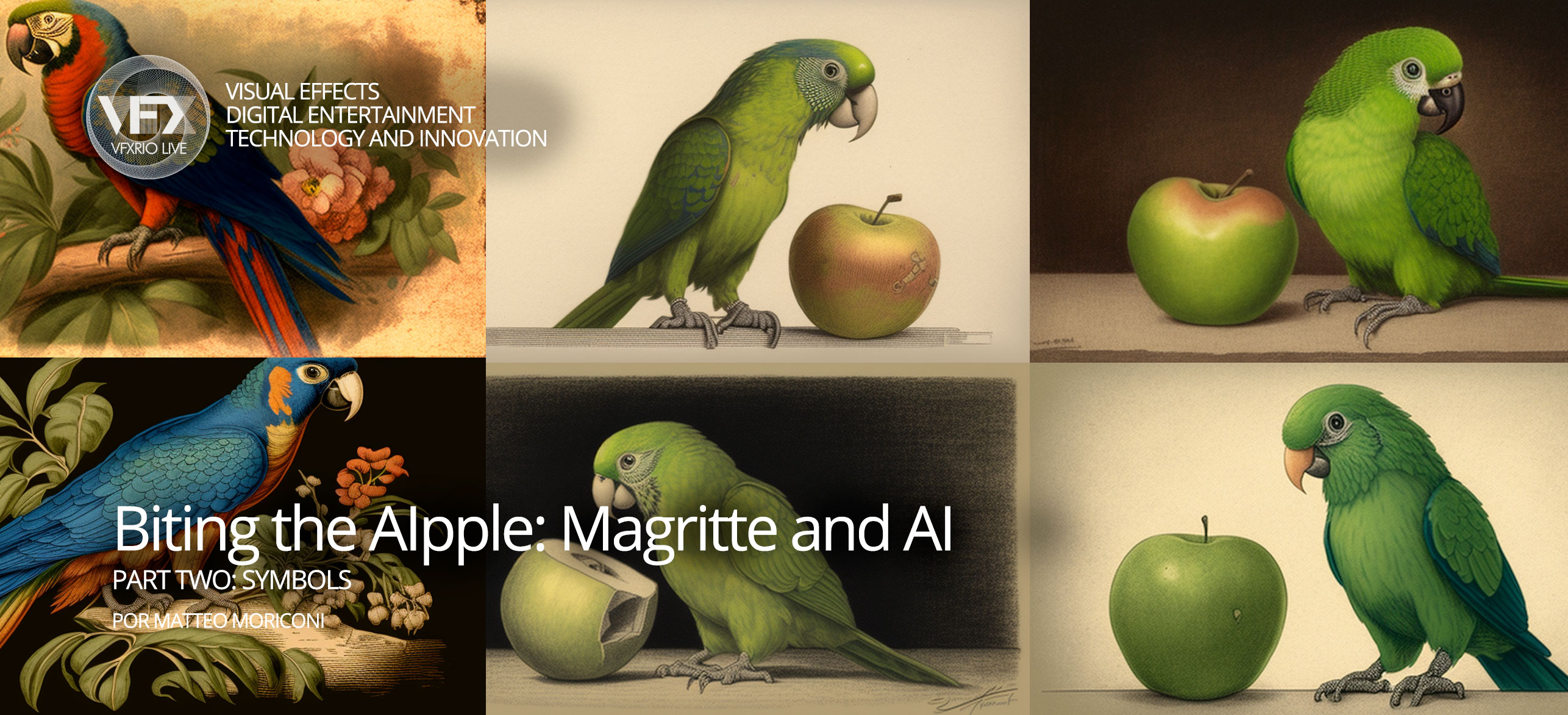Biting the AI Apple: Magritte and the AI
Symbols (Part 2)
by Matteo Moriconi in collaboration with Noah Charney

LETTERS TO MAGRITTE: INDEX | INTRODUCTION - SYNTHETIC ART | IMAGINARY CARDS - PART 1 | SYMBOLS - PART 2 TEXT AND IMAGE - PART 3


The Son of Man (1964) - Rene Magritte
And what of when Magritte used symbols? It was likewise not the least bit straightforward.
The apple in Magritte's Son of Man (1964) is a loaded symbol. Combined with the title of work, a phrase used to describe Christ, the apple becomes a symbol of Original Sin. Theologically, when Adam took the forbidden fruit in the Garden of Eden (traditionally shown as an apple), Original Sin was committed, and Adam and Eve were expelled from Eden. Sin remained until Christ's death, which reversed Original Sin. Christ's raison d'être was to die and thereby reverse Original Sin. So, anonymous man with an apple covering his face, when combined with the title Son of Man brings this concept to mind.

The apple covers the face of the figure standing there, rendering him an anonymous "everyman. It shows an unidentified businessman wearing a bowler hat, a suit, and with a green apple floating in front of his face. The interpretation of the work that would get a good grade on an essay would argue that the painting means that all of us bear the mark of Original Sin and should be grateful for Christ's sacrifice. Magritte wouldn't like that answer, however "correct" an art history teacher might deem it to be. For Magritte, if you can explain his painting, he has failed-his paintings should prompt questions, confusion, wonder, without the viewer ever feeling that they "get it" and can comfortably move on to other things.

View of The Lovers, an oil on canvas painting by French surrealist painter René Magritte, 1928. The painting is housed in The Museum of Modern Art, MoMA, New York, USA.
Jean-Paul Sartre was the philosopher that Magritte most admired. Sartre discussed the antagonistic nature of eye contact between individuals. Refusing to look someone in the eye is equivalent to refusing to recognize their humanity, soul, or existence.
If we cannot see someone's face, we do not feel that we "understand" them. If a face is not facing you, it is not a face. If we cannot see someone's face, they are not a person. Based on the face we deliberately choose to present to you, we want you to think that we are who we say we are. Magritte experienced a traumatic event as a child when he witnessed his mentally ill mother drowning herself and saw the body with her white, sopping nightgown covering her face. It doesn't need Freud to contemplate this as a possible explanation for The Lovers by Magritte. Magritte would vehemently disagree, though. Or, more precisely, he would object.

The Talking Parrot: Brazilian National Symbol and Avatar of Human Identity for John Locke
Why would Magritte seek to discredit a definite reading of his own creation? A dislike of art historians and a propensity to seek out information about an artist's biography? Magritte does not want you to believe that you have figured out the puzzle, hence this is the solution. Absorb yourself in the process of finding a solution, but resist the urge to declare the riddle solved. John Locke, a philosopher, proposed that it is in our nature as humans to seek to comprehend the world around us. Feeling as though we do not understand something is uncomfortable. Even if our "understanding" is flawed, it still enables us to store the knowledge rather than keeping it open and unresolved, which scares us.
According to Locke, humans acquire knowledge through a variety of conceptions, representations, and ideas. We may be able to identify a parrot because we have an image of what we believe a parrot to look like stored in our minds. We refer to a creature as a parrot when we see it and it sufficiently resembles our mental image of an ideal parrot. Yet, if we see anything that we are unable to identify, like a bird with tentacles and a horn protruding from its head, we should be concerned. Something which is unknown. Our likely response would be to categorize this new, unidentified apparition using established categories. Given that it has feathers and wings, it is similar to birds.
There are two layers at play here. First is how we, humans, "understand" things-by comparing them with what they are not in the "computers" that are our minds. Then there is how machine learning and artificial intelligence ape the human mind and try to become a virtual version of it, there to do our bidding.
For instance, take the most famous and ubiquitous of AI software engines for generating text, ChatGPT.
LETTERS TO MAGRITTE: INDEX | INTRODUCTION - SYNTHETIC ART | IMAGINARY CARDS - PART 1 | SYMBOLS - PART 2 TEXT AND IMAGE - PART 3


